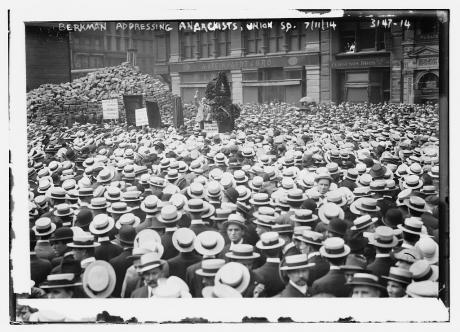
Photographs of a large anarchist rally in union Square, New York City, with Alexander Berkman addressing the crowd, on 11 July 1914.
Over 5,000 people attended the mass memorial meeting called by the Anti-Militarist League for Berg, Hanson, and Caron, the three anarchists killed in the Lexington Avenue explosion. Over 800 policemen monitored the meeting, while Berkman, Abbott, Edelsohn, Elizabeth Gurley Flynn, Carlo Tresca, David Sullivan and Charles Plunkett all spoke for their dead comrades.1
- 1. Thanks to Battlescarred for the clarifying information.
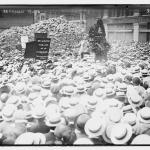
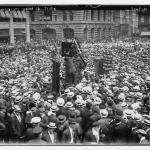
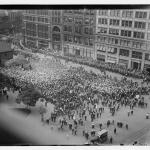
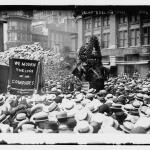



Comments
On July 11, 1914 over 5,000 people attended a mass memorial meeting called by the Anti-Militarist League for Berg, Hanson, and Caron, the three anarchists killed in the Lexington Avenue explosion. Over 800 policemen monitored the meeting, while Berkman, Abbott, Edelsohn, Elizabeth Gurley Flynn, Carlo Tresca, David Sullivan and Charles Plunkett all spoke for their dead comrades
anarchists should dress in suits again. enough of these black hoodies...
similar pictures here: http://userwww.sfsu.edu/~jmmoran/tarrytown.htm
thanks for that, I added one of the pictures which was of the same event
Quite right. Look how well turned out Durruti was, for example.
those hats would block out CCTV as well!
yeah but you would look like a bougey twat. Sorry to get all 'sectarian' (lulz), but there is nothing I hate more (obvious hyperbole, I hate loads) than going on a march and seeing some dufus in a bloody suit. Invariably a posh 'marxist'!!!!
yes but think how sharp it would look if all the anarchists turned up in suits. (suit bloc lol)
also, suits used to be the normal outfit for workers at one point

A couple of brief comments:
1. In this link http://userwww.sfsu.edu/~jmmoran/tarrytown.htm 14th photo down it reads:
"Alexander Berkman and Helen Harris arriving in Tarrytown, New Jersey June 1914"
It is actually Tarrytown, NEW YORK. At the time, the (still) vicious Phelps-Dodge Corporation (copper mining) owners lived in Mansions in Tarrytown.
2. The photo on the Rocker book:
In the garment industry of that time, it was usually the bosses (of different varities) who wore ties AND the craft worker - the "cutter". The one who cut patterns to be sewed. It's hard for me to tell if this was a pre-arranged posed photo. I tend to think it was as the (male) shopworkers (prolly pressers) are wearing their vests (which were often taken off when at work). The workers all seem to be secular (non-religious) Jews, which would indicate that some their garb was put on for the photo. Those workers who were more pious oftent wore their vests and a head cover ("yamulke") and married women would wear a wig ("shittel"). But most pious married women did not work in the shop.
Yeah the suit and hat thing was a workers' style at the time. Here is labor historian Joshua Freeman on workers in suits, arguing that is has to do with 19th century notions of manliness and bourgeois respectability:
That demonstration had the perfect combination — suits and fucking big pile of rocks.
fabulous stuff, both pictures and comments above